Designing and displaying your plants can be a creative and fulfilling process that adds natural beauty and personality to your home. No matter if you’re a seasoned plant enthusiast or a beginner looking to add some greenery to your living space, there are countless ways to incorporate plants into your home design. From choosing the right pots and containers to experimenting with different placement and grouping techniques, designing and displaying your plants can help you create a unique and visually interesting atmosphere that reflects your personal style and enhances your overall well-being.
So whether you live in an apartment in Spokane, WA or browsing Redfin for homes to buy in Charleston, SC, here are some tips and ideas for how to design and display your plants straight from the pros, so you can create a beautiful and thriving indoor oasis.
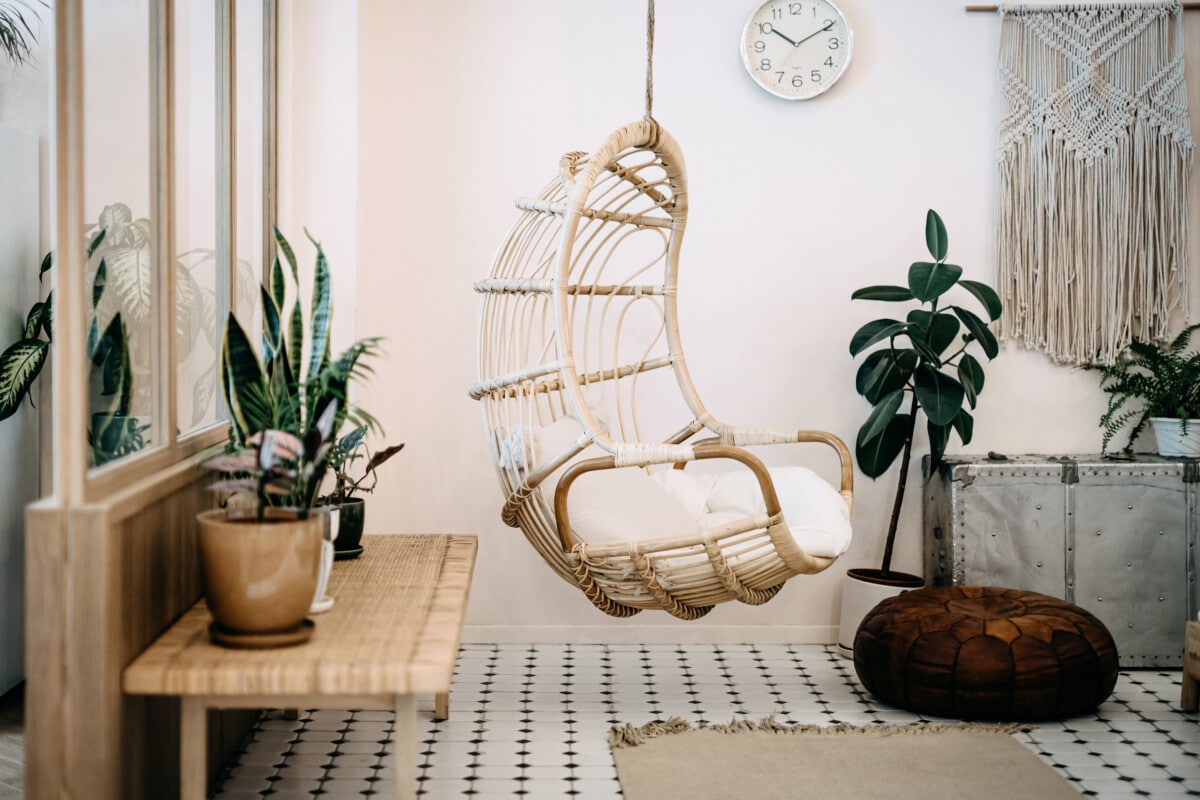
1. Assemble a small collection of plants
Assembling a small collection of plants for your home design can enhance the aesthetic appeal of the space. “Consider assembling a small collection of plants in a room as a living work of art with multiple textures and forms,” remarks Erica Hannickel, author of Orchid Muse. “This could enhance an otherwise sterile corner or stand as a focal centerpiece. Plants with the same light requirements tend to flock together, mutually increasing humidity for each other. If you grow smaller plants that need high humidity (like orchids, ferns, and air plants), consider creating a plant cabinet with light and muffin fans to recreate their natural environments.”
2. Make sure your plants have access to light and water
It’s important to give your plants enough light and water because they need both to stay healthy and grow. Light helps them make food and oxygen, and water helps them absorb nutrients and stay plump. If they don’t get enough of either, they might look sad, wilted, or even kick the bucket.
“Easy access to water or natural light would make caring for your plants much easier and ensure their survival if you don’t have a green thumb. For example, a windowsill is usually the best place in the house to get enough sunlight for your plants, and the kitchen sink or the bathroom is great for plants that like humidity. This way, you don’t have to make a mess or move your plants around when you water them,” shares Succulent Box.
3. Incorporate imaginative pots
Add character and personality to your home design with imaginative pots. Choosing pots with different textures, shapes, and made up of different materials can create a visually appealing contrast with your plants, while also complementing the overall decor of your space.
Succulent planting event company Succulent Bar notes, “With the significant rise of biophilic design, it is becoming increasingly popular to incorporate plants into your home décor. For many reasons, our favorite indoor plants are succulents. They come in all types of colors, shapes, textures, and sizes and adapt well to dry, indoor spaces assuming there is enough natural light available. I like to incorporate imaginative pots where I can, like a succulent dog planter I situated next to my son’s gumball machine. These textured white concrete planters really enhance my bathroom windowsill, and these cactus arrangements on my outside patio next to my stylish citronella candle set the mood just right.”
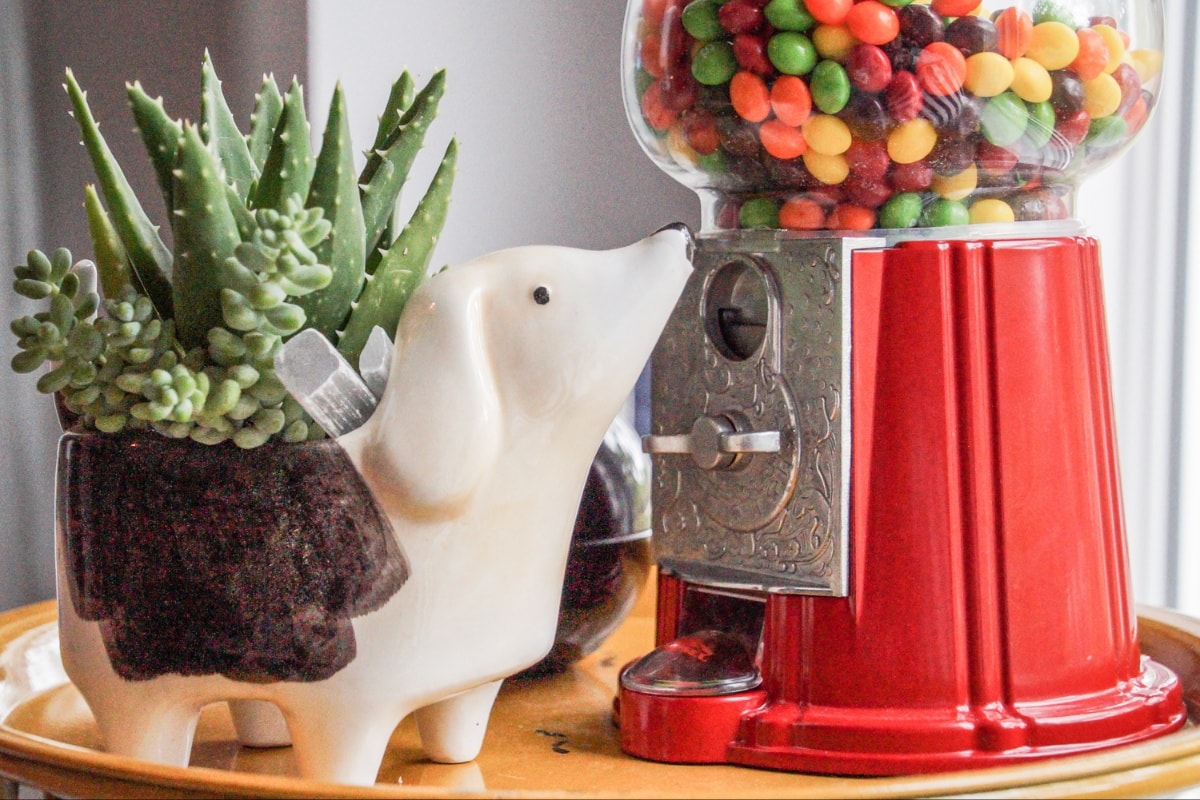
Photo courtesy of Succulent Bar
4. Mix and match your containers
Mixing and matching containers is an excellent way to add contrast to home design. “Colors, textures, shapes, and different sizes of containers can bring variety and tie everything together,” notes Nate’s Nursery, based in Apple Valley, CA. “Placing a gray, black, or other dark-colored oval pot with a green plant inside a white bookshelf is a great example of how a single decoration can make a significant difference. Etsy, local pottery stores, or bonsai pots can be great sources of pottery that come in various colors, textures, shapes, and sizes.”
5. Display houseplants on your wall
Displaying plants on walls is an innovative and space-saving way to incorporate greenery into your home design. By utilizing wall-mounted planters, floating shelves, or hanging baskets, you can add visual interest to an otherwise plain wall while freeing up valuable floor space.
“We love displaying houseplants on your wall, we find it can really bring your home to life. It becomes a live art display and tends to be one of the main things guests comment on. Our trick to making it easy to care for is by propagating and growing plants in water as each plant has the same care routine, and one only needs weekly watering,” says Modern Botanical.
6. Choose pots with drainage holes
Choosing pots with drainage holes is an essential consideration when selecting containers for your plants. Adequate drainage is crucial for plant health, as it allows excess water to escape, preventing waterlogged soil and root rot. Additionally, drainage holes can help improve air circulation around the roots, promoting healthy growth and preventing fungal diseases.
“Be sure to always choose a pot with drainage holes, no matter the material,” remarks Trex Plants. “When I find a cute ceramic or plastic container that doesn’t have drainage, I’ll adapt by placing my plants in a plastic pot that fits into the container. This way, the plants get the drainage they need to prevent rot or fungus gnats, and I have a nice display that even acts as a drip tray. Make sure to empty it regularly.”
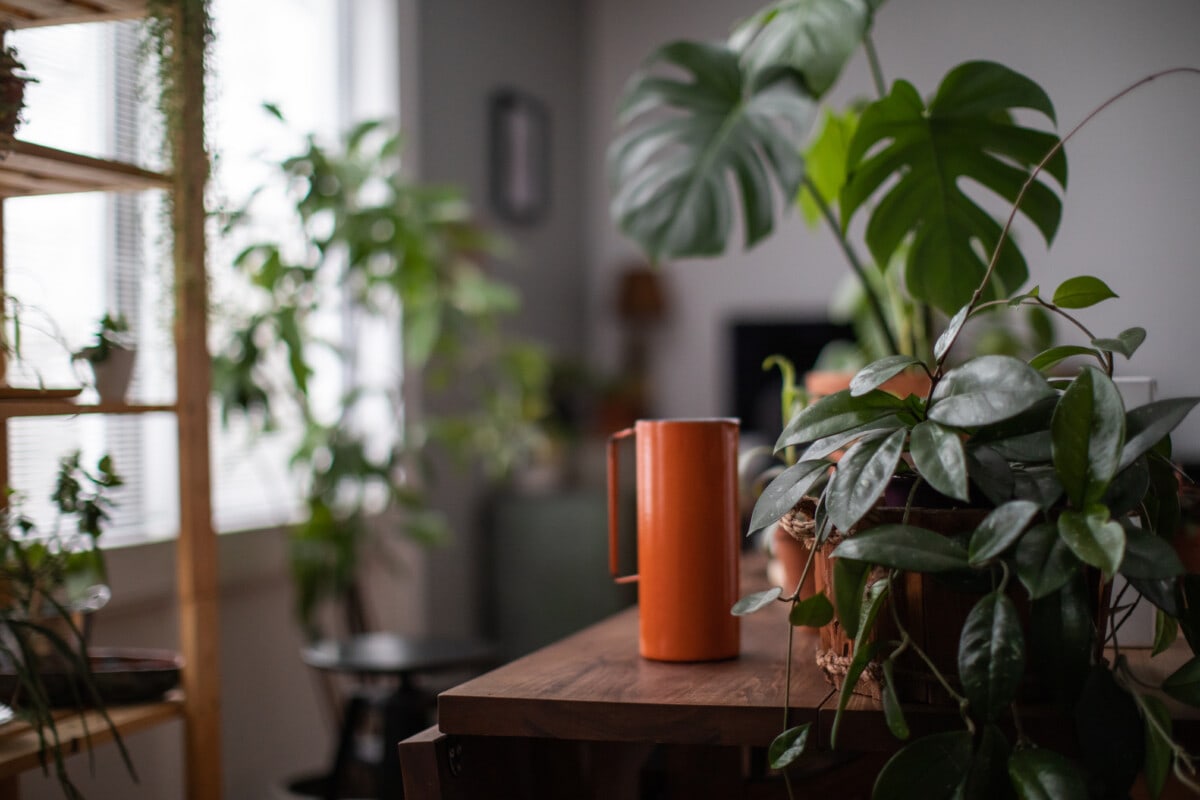
7. Pot Dracaena plants in a clear glass cylinder vase
Potting Dracaena plants in a clear glass cylinder vase is a trendy and stylish way to add a touch of nature to your home design. The transparent glass vase allows for the plant’s intricate and strikingly patterned foliage to be fully appreciated, while also showcasing the plant’s root structure.
Marialuisa of Urban Succulents shares, “Dracaena plants do great indoors and look great in a clear glass cylinder vase that can be found at most local florist supply stores. Get a cylinder measuring 12″ in diameter and 12″ tall. Then, place a dracaena plant measuring 18″ tall into the cylinder and then place small river rocks around the root ball so only the rock is showing for a clean look.”
8. Display plants in areas you can enjoy
Placing plants in areas you can enjoy is a great way to incorporate nature into your daily life and promote a sense of well-being.
Little Prince Nursery of Portland, OR says, “Feature that beautiful bloomer for a short time where you can enjoy it every day. It might live on the plant shelf most of the time, but pop it on the kitchen table when blooming to brighten things up.”
9. Hang spider plants in a pot or basket
Hanging spider plants in a pot or basket is an easy and attractive way to add natural beauty to your space. Spider plants are known for their long, slender leaves and when hung in a pot or basket, their trailing foliage can create a visually interesting and dynamic display, while also freeing up valuable floor space.
“The spider plant is another excellent choice and is known for its cascading leaves, which create a visually appealing display when hung in a pot or basket. Hang spider plants in your bathroom, kitchen, or patio for a fresh and natural touch. They also make great options for hanging from clothing racks or bookshelves to create a unique and eye-catching display,” shares Cactus and Stone.
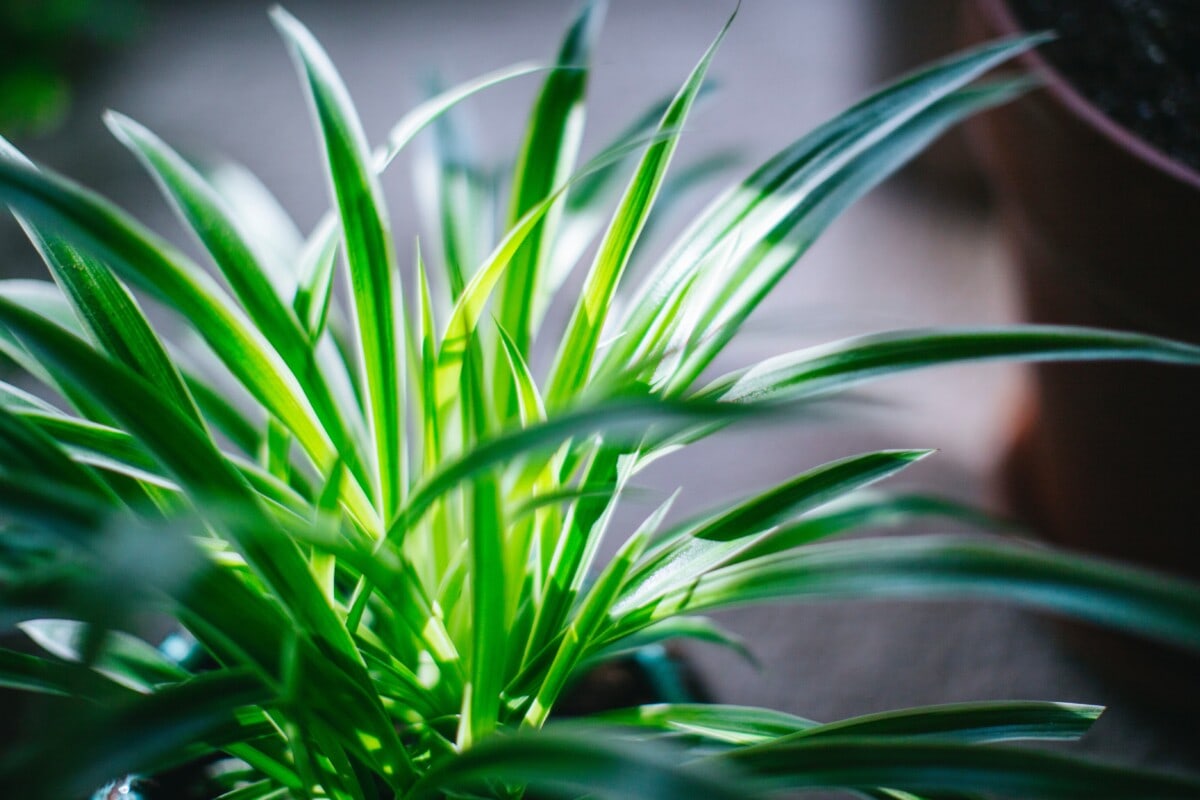
10. Decorate with the beautiful Camellia flower
Decorating with the beautiful Camellia flower is a wonderful way to add a touch of elegance and charm to your home design. Known for their striking and intricate blooms, Camellias come in a range of colors and varieties, making them a versatile choice for floral arrangements and displays.
Oregon Camellia Society suggests, “Slow-growers like Jack’s Variegated in a large clay pot for the first few years of growth where you could enjoy the gorgeous blooms right in your living space, whether a sunroom or patio. Camellias may require a little clean-up during the blooming season but otherwise offer gorgeous evergreen décor anywhere in your home where a little sun can shine into a shaded space.”
11. Make plants a statement or an accent piece
“When styling houseplants, I think of statement pieces and accent pieces” says Whitney’s Flora. “Large, mature plants such as Fiddle Leaf Figs, Monstera Deliciosas, or Bird of Paradises can turn empty corners or dead space into an eye-catcher while smaller plants like a trailing Pothos or Philodendron would be perfect for placing on shelves to bring some life to an empty wall.”
Andrew Herley, Brand Manager of Thriving Botanicals adds, “When it comes to styling plants in your house, think about what purpose that plant will provide. Ask yourself if you want to have it be a statement or would you rather it go with the aesthetic that you are trying to achieve. Statement plants like fiddle leaf figs, monstera, or a bird of paradise are great additions for a pop of color with beautiful texture. While a plant like a pothos, zz, or even a Hoya would match almost any aesthetic a homeowner would want to achieve.”
12. Use vases for propagation displays
Using vases for propagation displays is an aesthetically pleasing and practical way to grow new plants from cuttings. By filling a vase with water and inserting the cutting, the stem can absorb moisture and nutrients to grow roots. This method not only creates a visually interesting display, but it also allows you to propagate new plants without the need for soil or pots.
Molly and Michelle, co-owners of The Ground share, “Use existing vases for Propagation displays. Create a unique centerpiece by combining cuttings from similar plants, like pothos and philodendrons into vases you already own. Your arrangement will last longer than traditional cut flowers, and in a few weeks you’ll have rooted propagations ready to be repotted. Clear glass vases work best, and be sure to change the water every few days.”
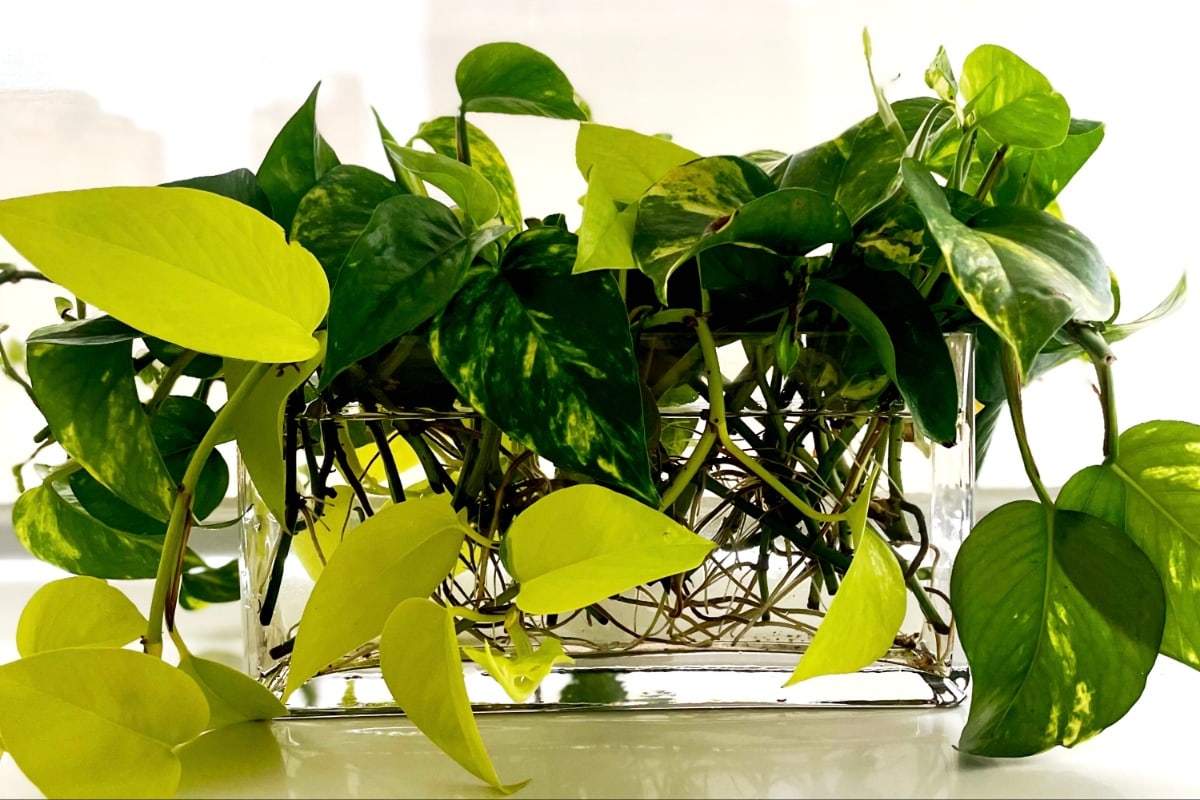
Photo courtesy of The Ground
13. Shape vines around items in your home
Anjali Singh, Content and Community Manager of Plant Cell Technology, notes, “When thinking about making our homes more lively, nothing comes to mind than filling the space with beautiful plants. They come in an array of shapes, sizes, and colors that brighten up our living place. One way to design your plants is by shaping vines as you want. You can either wrap around a mirror, deck, or pillars to make the space more green and vibrant.”
14. Tie lavender stems and place them in a jar, wall, or doorknob
Tying lavender stems and placing them in a jar, on a wall, or a doorknob is a delightful and fragrant way to add natural beauty and relaxation to your living spaces.
“Harvesting lavender from your garden is a great way to enjoy its soothing aroma and beautiful color in your home. To harvest lavender, cut the stems just as the buds begin to open. After you’ve harvested the lavender, tie the stems together and hang them upside down in a cool, dry place to dry for a few weeks. Once the lavender is dry, you can place it in a vase or mason jar or hang a bundle on a wall or doorknob,” states Ryan Hopkins of Lavender Creek Co.
15. Be intentional about the feel you want in your home
“Plants by themselves have the ability to spruce up any space, but the way you display them is key. Macrame hangers can bring a boho feel to your space, while hanging a terrarium in your window can bring a space-age feel. Something as easy as putting your plants in an old tea tin completely changes the vibe. If you’re a more creative type, any sort of glassware makes a truly unique look, such as old tea cups or antique punch bowls,” remarks The Philadelphia Flower Market.
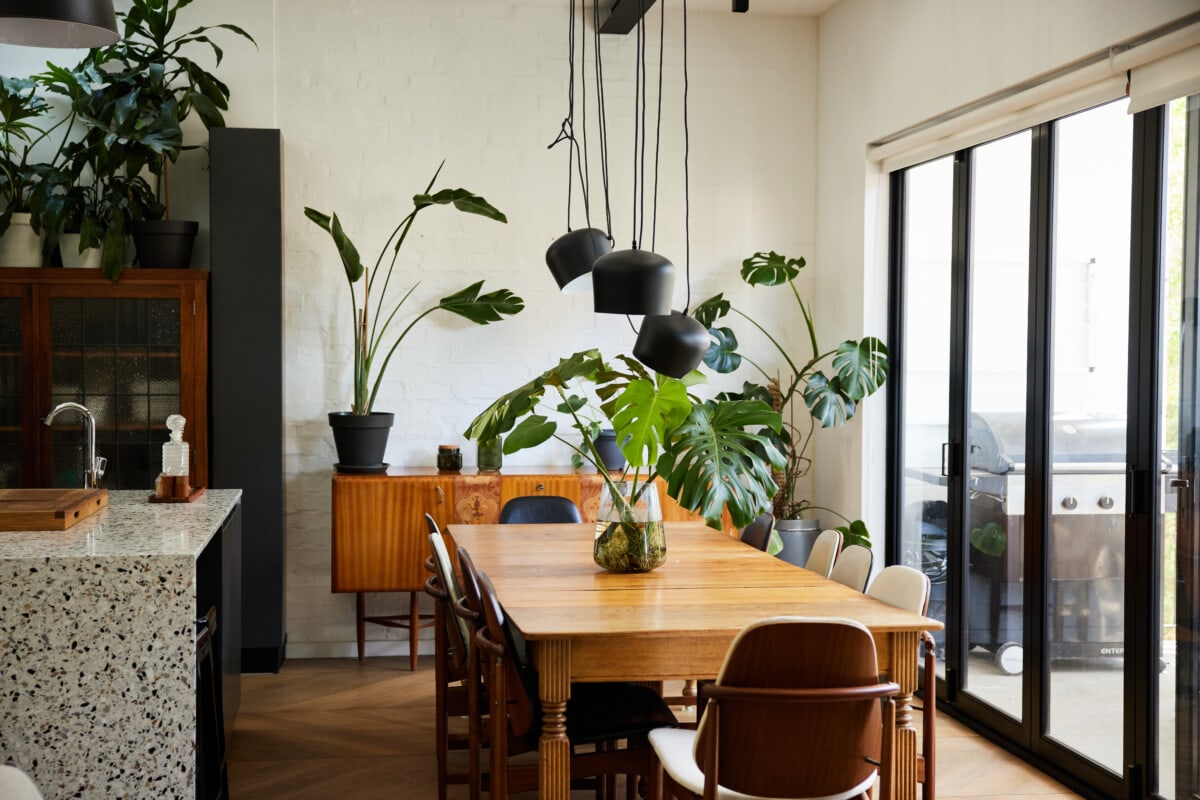
16. Cluster plants based on their needs
Finding the right place for your plants will enhance your home’s aesthetic, but most importantly, should also be the right place for your type of plants to keep them healthy and happy.
Neighborhood plant shop Chicago Plants states, “Clustering your humidity lovers, such as Ferns or Calathea, will help to produce a naturally humid environment, and utilizing plant stands in a cluster can create a fuller look. Plants suitable for low light, such as ZZ Plants or Snake Plants, are a great way to add greenery to a dim area of your home like a hallway or bathroom. Many indoor plants, like the Bird of Paradise, Cactus, and some Ficus, love the sun and will be happy to live on your porch or patio over the summer months.”
17. Display plants in odd numbers
Grouping plants in odd numbers is a simple and effective way to create a visually pleasing and balanced display in your home. The human eye tends to find odd numbers more aesthetically pleasing and memorable than even numbers, making groupings of three, five, or seven plants more effective than pairs or even numbers.
“Before displaying plants in your home, make a visit to your local art gallery or museum. Normally items are displayed in odd numbers,” shares Nick Federoff Televisions/Radio Horticulturalist of Things Green. “Odd numbers are pleasing to the eye. Houseplants should be treated the same way. And remember, make certain each plant has a saucer to catch the excess water from spilling on your carpet or hardwood floors.”
The post Plants, Pots, and Placement: 17 Expert Tips for Designing and Displaying Plants in Your Home appeared first on Redfin | Real Estate Tips for Home Buying, Selling & More.
from Redfin | Real Estate Tips for Home Buying, Selling & More https://ift.tt/HgekwSQ





No comments:
Post a Comment